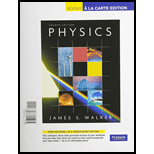
Concept explainers
(a)
Interpretation:
To state the balanced chemical equation for the given reaction and give the name of the products so formed.
Concept introduction:
A balanced
(b)
Interpretation:
To state the balanced chemical equation for the given reaction and give the name of the products so formed.
Concept introduction:
A balanced chemical reaction equation is the one in which the number of atoms of all the elements are equal on both the sides of the chemical equation.A compound refers to a substance which contains definite proportion of two or more elements joined together through chemical bonds. A chemical formula depicts the number of atoms of each element present in a compound. It consists of symbols of each of the atoms present in the given compound as well as how many atoms of each element are present in the compound are denoted by a subscript.
(c)
Interpretation:
To state the balanced chemical equation for the given reaction and give the name of the products so formed.
Concept introduction:
A balanced chemical reaction equation is the one in which the number of atoms of all the elements are equal on both the sides of the chemical equation.A compound refers to a substance which contains definite proportion of two or more elements joined together through chemical bonds. A chemical formula depicts the number of atoms of each element present in a compound. It consists of symbols of each of the atoms present in the given compound as well as how many atoms of each element are present in the compound are denoted by a subscript.
(d)
Interpretation:
To state the balanced chemical equation for the given reaction and give the name of the products so formed.
Concept introduction:
A balanced chemical reaction equation is the one in which the number of atoms of all the elements are equal on both the sides of the chemical equation.A compound refers to a substance which contains definite proportion of two or more elements joined together through chemical bonds. A chemical formula depicts the number of atoms of each element present in a compound. It consists of symbols of each of the atoms present in the given compound as well as how many atoms of each element are present in the compound are denoted by a subscript.
Want to see the full answer?
Check out a sample textbook solution
Chapter 20 Solutions
Student Solutions Manual For Masterton/hurley's Chemistry: Principles And Reactions, 8th
- 5. Write the formation reaction of the following complex compounds from the following reactants: 6. AgNO₃ + K₂CrO₂ + NH₄OH → 7. HgNO₃ + excess KI → 8. Al(NO₃)₃ + excess NaOH →arrow_forwardIndicate whether the product formed in the reaction exhibits tautomerism. If so, draw the structure of the tautomers. CO₂C2H5 + CH3-NH-NH,arrow_forwardDraw the major product of this reaction N-(cyclohex-1-en-1-yl)-1-(pyrrolidino) reacts with CH2=CHCHO, heat, H3O+arrow_forward
- Draw the starting material that would be needed to make this product through an intramolecular Dieckmann reactionarrow_forwardDraw the major product of this reaction. Nitropropane reacts + pent-3-en-2-one reacts with NaOCH2CH3, CH3CHOHarrow_forwardIndicate whether the product formed in the reaction exhibits tautomerism. If so, draw the structure of the tautomers. OC2H5 + CoHs-NH-NH,arrow_forward
- Explain how substitutions at the 5-position of barbituric acid increase the compound's lipophilicity.arrow_forwardExplain how substitutions at the 5-position of phenobarbital increase the compound's lipophilicity.arrow_forwardName an interesting derivative of barbituric acid, describing its structure.arrow_forward
- Briefly describe the synthesis mechanism of barbituric acid from the condensation of urea with a β-diketone.arrow_forwardGiven the hydrazones indicated, draw the structures of the enamines that can be formed. Indicate the most stable enamine (explain). C6H5 C6H5 H C6H5 Harrow_forward4. Propose a Synthesis for the molecule below. You may use any starting materials containing 6 carbons or less (reagents that aren't incorporated into the final molecule such as PhзP do not count towards this total, and the starting material can have whatever non-carbon functional groups you want), and any of the reactions you have learned so far in organic chemistry I, II, and III. Your final answer should show each step separately, with intermediates and conditions clearly drawn.arrow_forward
 Chemistry: Principles and ReactionsChemistryISBN:9781305079373Author:William L. Masterton, Cecile N. HurleyPublisher:Cengage Learning
Chemistry: Principles and ReactionsChemistryISBN:9781305079373Author:William L. Masterton, Cecile N. HurleyPublisher:Cengage Learning Chemistry & Chemical ReactivityChemistryISBN:9781337399074Author:John C. Kotz, Paul M. Treichel, John Townsend, David TreichelPublisher:Cengage Learning
Chemistry & Chemical ReactivityChemistryISBN:9781337399074Author:John C. Kotz, Paul M. Treichel, John Townsend, David TreichelPublisher:Cengage Learning Chemistry & Chemical ReactivityChemistryISBN:9781133949640Author:John C. Kotz, Paul M. Treichel, John Townsend, David TreichelPublisher:Cengage Learning
Chemistry & Chemical ReactivityChemistryISBN:9781133949640Author:John C. Kotz, Paul M. Treichel, John Townsend, David TreichelPublisher:Cengage Learning Chemistry by OpenStax (2015-05-04)ChemistryISBN:9781938168390Author:Klaus Theopold, Richard H Langley, Paul Flowers, William R. Robinson, Mark BlaserPublisher:OpenStax
Chemistry by OpenStax (2015-05-04)ChemistryISBN:9781938168390Author:Klaus Theopold, Richard H Langley, Paul Flowers, William R. Robinson, Mark BlaserPublisher:OpenStax Chemistry: Principles and PracticeChemistryISBN:9780534420123Author:Daniel L. Reger, Scott R. Goode, David W. Ball, Edward MercerPublisher:Cengage Learning
Chemistry: Principles and PracticeChemistryISBN:9780534420123Author:Daniel L. Reger, Scott R. Goode, David W. Ball, Edward MercerPublisher:Cengage Learning




